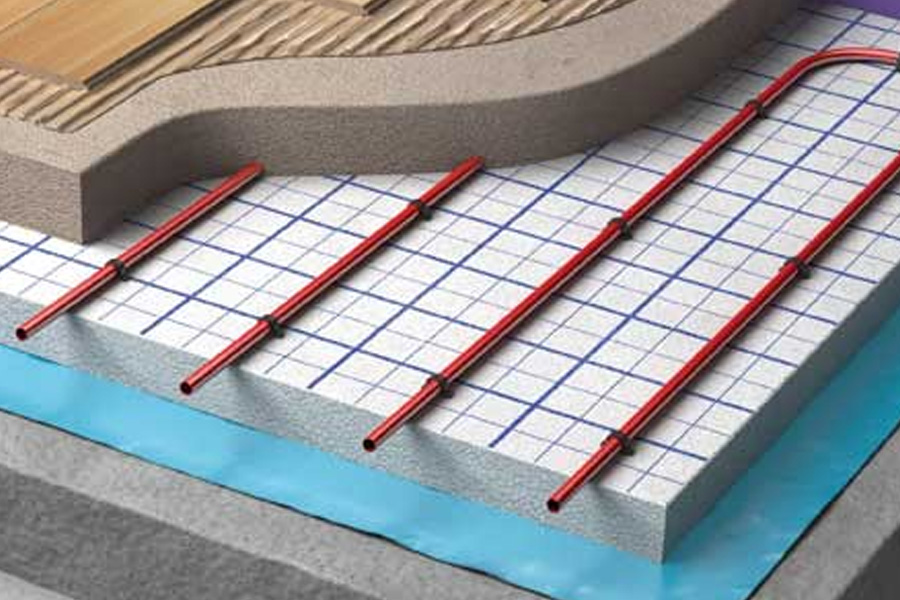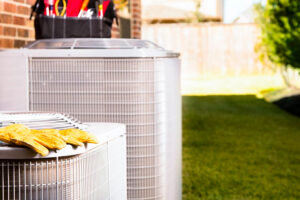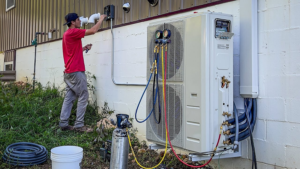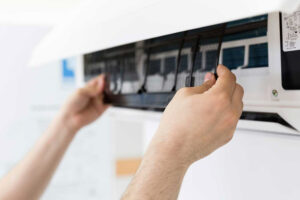
Underfloor heating has become an increasingly popular choice for homeowners seeking an efficient and comfortable way to heat their homes. As with any significant home improvement, understanding the costs and benefits of different systems is crucial. This article will delve into the details of electric and water underfloor heating systems, comparing their installation costs, running expenses, efficiency, and suitability for various applications.
Installation Costs
The initial cost of installing an underfloor heating system can vary significantly depending on whether you choose electric or water-based heating. Electric underfloor heating systems typically have lower upfront installation costs. They are easier and quicker to install, especially in retrofit situations where the existing flooring needs minimal disruption. The installation involves laying electric heating mats or cables directly beneath the floor surface. This simplicity makes electric systems a more attractive option for DIY enthusiasts or smaller renovation projects.
In contrast, water-based (or hydronic) underfloor heating systems usually come with higher installation costs. These systems require a more complex setup, involving the installation of a network of pipes beneath the floor, through which warm water is circulated. The complexity is compounded if the system is being retrofitted into an existing home, often necessitating significant alterations to the flooring and possibly even the structure of the building. Additionally, a boiler or heat pump is required to heat the water, adding to the initial investment.
Running Costs
When it comes to running costs, water underfloor heating systems generally have the edge over electric systems. Hydronic systems are more energy-efficient, especially when used to heat larger areas or entire homes. They can be connected to high-efficiency boilers, heat pumps, or solar thermal systems, further reducing energy consumption and costs. The warm water circulating through the pipes retains heat well and provides a consistent and comfortable temperature, reducing the need for frequent adjustments and thus conserving energy.
Electric underfloor heating, on the other hand, can be more expensive to run. Electricity prices tend to be higher than gas or other fuels used to power boilers. Moreover, electric systems are generally less efficient in terms of energy retention, which can lead to higher overall energy consumption to maintain the desired temperature. However, in smaller areas or well-insulated homes, the difference in running costs may not be as pronounced, making electric systems a viable option.
Efficiency and Performance
Efficiency is a critical factor in the performance of underfloor heating systems. Hydronic systems are known for their superior efficiency in larger spaces and whole-house applications. The even distribution of heat through water-filled pipes ensures a uniform temperature across the floor, enhancing comfort and reducing cold spots. These systems are also compatible with renewable energy sources, such as solar panels and geothermal heat pumps, which can significantly lower their environmental impact and running costs over time.
Electric underfloor heating systems, while less efficient overall, offer some unique advantages. They heat up more quickly than hydronic systems, providing almost instant warmth when needed. This makes them ideal for use in bathrooms, kitchens, or other small areas where quick heat is desired. Additionally, electric systems do not require maintenance of a boiler or heat pump, simplifying their upkeep and potentially reducing long-term maintenance costs.
Suitability for Different Applications
The choice between electric and water underfloor heating often depends on the specific application and the characteristics of the space being heated. For new builds or major renovations, where the entire heating system can be integrated into the design from the outset, hydronic systems are often preferred. Their efficiency and lower running costs make them a sound investment for heating large areas or entire homes.
For smaller spaces or retrofit projects, electric underfloor heating can be a more practical solution. The lower installation costs and ease of installation make it an attractive option for adding underfloor heating to a single room or a limited area. Electric systems are also well-suited for homes with limited access to natural gas or other fuels required for hydronic systems.
Environmental Impact
The environmental impact of underfloor heating systems is another important consideration. Hydronic systems, particularly when paired with renewable energy sources, can be more environmentally friendly than electric systems. The ability to use solar thermal energy or geothermal heat reduces reliance on fossil fuels and lowers greenhouse gas emissions.
Electric systems, while potentially using electricity generated from non-renewable sources, can still be environmentally friendly if the electricity is sourced from renewable energy. Advances in energy storage and grid management are making it increasingly feasible to power electric heating systems sustainably.
Conclusion
Choosing between electric and water underfloor heating requires a careful evaluation of various factors, including installation and running costs, efficiency, suitability for different applications, and environmental impact. Hydronic systems offer greater efficiency and lower running costs for larger areas, making them ideal for whole-house heating solutions, especially in new builds or major renovations. Electric systems, with their lower upfront costs and ease of installation, are well-suited for smaller spaces and retrofit projects.
Ultimately, the decision will depend on your specific circumstances, including your budget, the size and layout of the area to be heated, and your long-term energy goals. By understanding the nuances of each system, you can make an informed choice that balances comfort, cost, and environmental responsibility.





